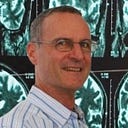Authorities routinely blame the overweight for eating too many calories and not exercising enough. Telling obese people they eat too much is as useful as telling alcoholics they drink too much.
But, what if eating and inactivity are symptoms of obesity, not causes? In that case, we should not be targeting these symptoms, but rather identifying the cause and targeting that. Lets get an understanding of this by looking at some biology.
Glucose is the building block of carbohydrates. When carbohydrates are eaten, the body swiftly breaks them down to get as much glucose as possible. It is then faced with a choice — to use that glucose for energy right then, or to store it for later. It can be stored as fat, or converted into glycogen by the liver and stored there or in muscle (as an energy source during intense exercise).
The body needs to make this choice quickly because, even though glucose is an important energy source, glucose is also toxic to us. As surprising as that might sound, it is not uncommon — for example the oxygen that we breathe is essential, but oxidation is damaging and we need anti-oxidants to survive. If there is too much glucose around, it can attach itself randomly to proteins and fats and cause them to dysfunction (a process known as glycation).
If the decision is to store the glucose, then the pancreas drives the fat-storage mechanism by releasing insulin that puts the spare glucose into fatty (adipose) tissue. But, insulin doesn’t stop there — it opposes the burning of fat to release that glucose for energy. Insulin locks the glucose away as fat and throws away the key.
Under normal circumstances, and so long as there are not too many carbohydrates in the diet, this all works itself out. Once glucose levels in the blood drop too low, other messengers (e.g. glucagon) start to release stored fats that are broken down by the liver to produce ketones — an alternative and efficient energy source. This is the main way fat stores are mined and fat reduced. If there is always glucose around (because we continually eat carbohydrates), then the ketone mechanism doesn’t get triggered, and insulin just keeps storing ingested glucose as fat.
Furthermore, the pancreas normally responds quickly and effectively to lock away the glucose. We then run out of glucose a few hours later. But rather than letting the ketone mechanism deal with it, hunger signals are sent to the brain and the brain directs us to a food source, which will be more carbohydrates if we are following the USDA high-carbohydrate diet. The ultimate regulator is the brain.
In the end it becomes circular and reinforcing. Eat carbohydrates — store fat — get hungry — eat carbohydrates — repeat. Every few hours of every day of your life. It is asking for trouble. Furthermore, since glucose is locked away, energy levels are chronically low. The result is inactivity. With this model, eating and inactivity are symptoms of an excess of carbohydrates in the diet. Obesity is the outcome.
